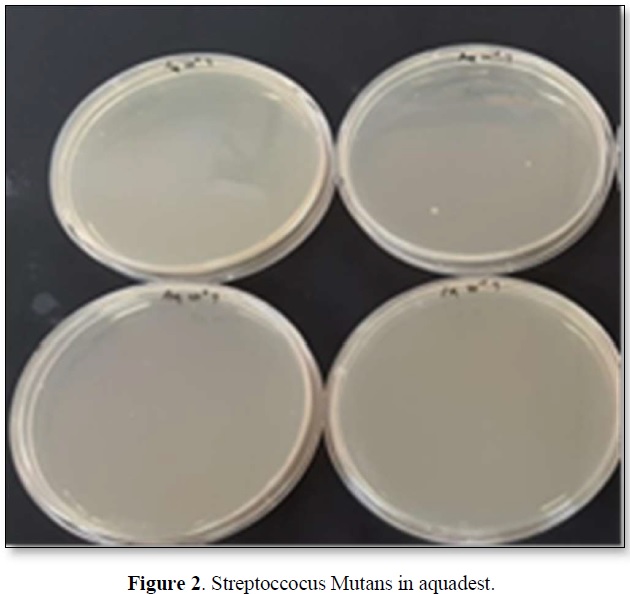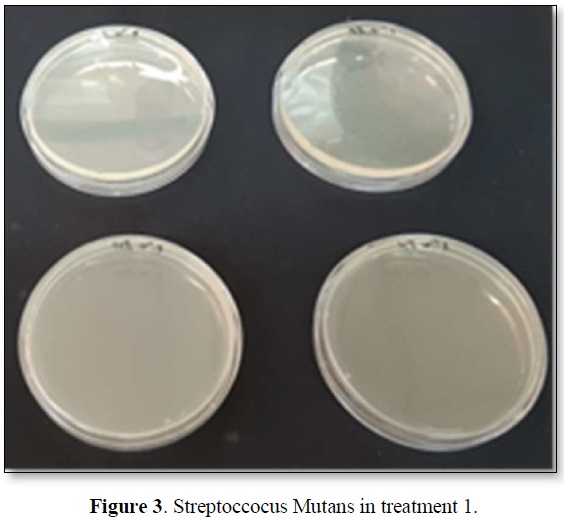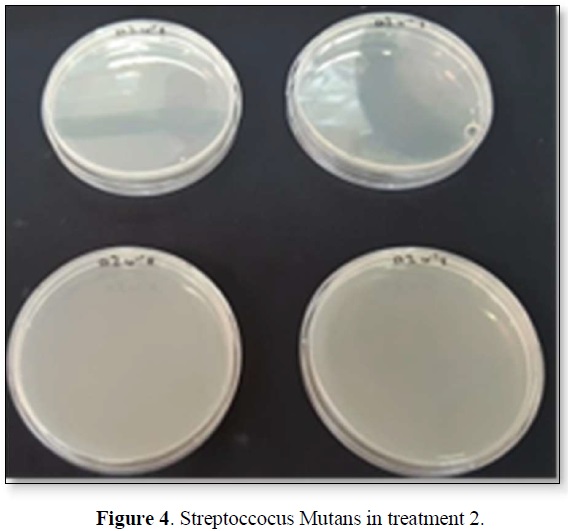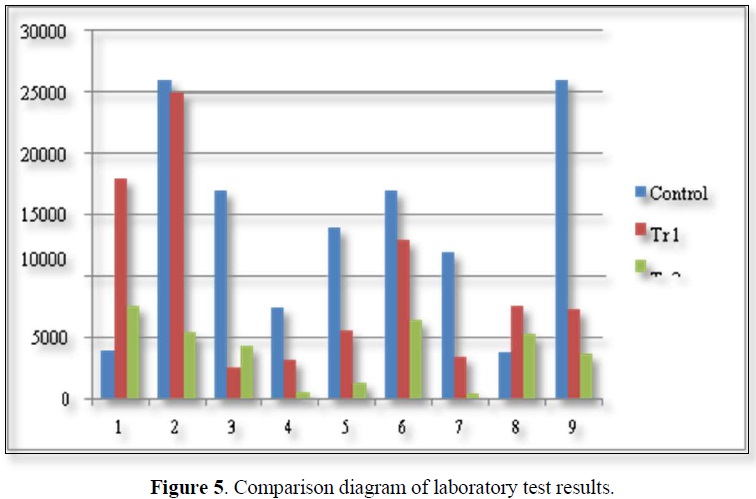-
Publish Your Research/Review Articles in our High Quality Journal for just USD $99*+Taxes( *T&C Apply)
Offer Ends On
Fransiska Nuning Kusmawati* and Noor Azizah Hikmah
Corresponding Author: Fransiska Nuning Kusmawati, Departement of Prosthodonsia, Faculty of Dentistry, University Prof. DR. Moestopo (Beragama), Jakarta, Indonesia
Received: June 21, 2022 ; Revised: July 30, 2022 ; Accepted: August 02, 2022
Citation: Kusmawati FN & Hikmah NA. (2022) Effect of Pandan Leaf Extract as Antibacterial on the Growth of Streptococcus Mutans on Heat Cured Acrylic Resin Plate. J Nurs Midwifery Res, 1(2): 1-5.
Copyrights: ©2022 Kusmawati FN & Hikmah NA. This is an open-access article distributed under the terms of the Creative Commons Attribution License, which permits unrestricted use, distribution, and reproduction in any medium, provided the original author and source are credited.
Views & Citations
Likes & Shares
Abstract
Background: Base on removable partial dentures can be made of metal or acrylic. Heat cured acrylic resin has one of the advantages that is resistant to bacterial growth. One of the ingredients that contain antibacterial is pandan leaves. Pandan leaves are substances that can perform as an antibacterial because it’s suspected to contain active substances such as flavonoid, alkaloid, tannin, saponin, and polifenol and asitri oil.
Objective: The aim of this study is to explain the effect of pandan leaf extract as an antibacterial against Streptococcus Mutans on heat cured acrylic resin plate.
Methods: The study was a laboratory experimental research. Total sample were 27 samples (10x10x2 mm) sample were divided into three groups: aquadest, pandan leaf extract 25% (treatment 1) and pandan leaf extract 50% (treatment 2). Each treatment group consisted of 9 samples and soaked for 30 min. The colonies is counted and analyzed.
Result: The results of the study based on the Kruskall Wallis statistical test obtained p = 0.022 with the interpretation (p<0.05) indicates that there was significant differences in control, treatment 1 and treatment 2. Conclusion: There was significant influence of the pandan leaf extract as an antibacterial against Streptococcus Mutans on heat cured acrylic resin plate.
Keyword: Heat cured acrylic resin, Pandan leaf extract, Antibacterial, Streptococcus mutans
INTRODUCTION
Based on the polymerization, there are three types of acrylic resin, namely cold cured, heat cured, and light cured. Denture base material that is often used is polymethyl methacrylate; a heat cured acrylic resin [1]. Heat cured acrylic resin is currently a commonly used material as a denture base material. Heat cured acrylic resin has the advantages of being easy to process and polishing, aesthetically pleasing, affordable cost, and low toxicity [2]. Acrylic resin dentures are always in contact with saliva, drinks and food so that dentures are a place for the formation of stains, tartar and plaque due to lack of hygiene maintenance of acrylic resin dentures by the tongue and saliva resulting in the accumulation of plaque on the dentures [3].
Denture cleaning can be done by mechanical, chemical, or a combination of mechanical and chemical methods. Chemical cleaners are more effective at removing biofilm, stain, and calculus. Chemical cleaning of dentures can be done by immersing the dentures into denture cleaning fluid, but in reality many denture users use mouthwash as a denture cleaner. The reason they use mouthwash as a denture cleanser is because they see advertisements in the mass media which say that mouthwash has the effect of eliminating bad breath and killing bacteria [4]. The use of traditional medicine to overcome health problems as community maintenance, prevention and treatment of disease is considered safer than the use of modern medicine. One of the ingredients from medicinal plants that are used as a traditional disinfection material is pandan leaf, a plant whose leaves are often used as a food additive, generally as a green dye and flavoring agent [5].
HEAT CURED ACRYLIC RESIN
The denture base is the part of the denture that rests on the mucosa oral cavity, as well as the attachment site for dentures. Many materials have been used as a denture base material. Bases on removable partial dentures can be made of metal or acrylic. Materials that are still often used currently are acrylic resin. Historically, wood, bone and ivory were materials which were used as a denture base material. Along with development denture base technology and materials, currently these materials are turning into resins synthesis [6].
Heat polymerization acrylic resin (RAPP) is a material that is often used in the manufacture of removable partial dentures and full dentures due to its lower cost, easy application and polishing and using simpler equipment. This resin requires heat source to activate the initiator. This material can be activated via some methods are using a water bath, or a microwave [7].
PANDAN LEAF (PANDANUS AMARYLLIFOLIUS)
Pandan leaves (Pandanus amaryllifolius) or commonly called pandanus is Monocot plant species from the Pandanaceae family. The leaves are an important component in the culinary traditions of Indonesia and Asian countries other Southeast. Pandanus amaryllifolius is the only species Pandanus which has fragrant leaves. This plant is known for its smell has a distinctive fragrance, so it is called fragrant screw pine [8] (Figure 1).

RESEARCH METHODOLOGY
The type of research used is experimental laboratories with posttest only control group design, namely taking measurements after the intervention in the treatment group and comparing the results of measurements with the control group. This type of research compares the results of treatment with pandan leaf extract compared to aquadest as a control. This research was conducted at the Laboratory of Biotechnology Center, BPPT, South Tangerang in August 2019. The heat cured acrylic resin plate used as the research sample was 27 with 10x10x2 mm in size. All samples are the same size and shape and are also polished.
Pandan Leaf Extract Solution: The pandan leaves used are fresh pandan leaves with a size of approximately 40-80 cm long, 3-5 cm wide and approximately 2 cm thick. Pandan leaves collected as much as 1 kg. Pandan leaves that have been collected first are washed until clean. Then the pandan leaves are cut into small pieces, and aerated. Then dried in the oven at 45°C for 2 h. After the pandan leaves were dry and ground, they were extracted using 70% ethanol for 3 h. The extract liquid was concentrated using a Vacuum Rotary Evaporator to obtain a dry extract. Making a 25% pandan leaf solution with 25 grams of pandan leaf extract dissolved in distilled water up to 100 ml. To make a 50% pandan leaf solution, 50 grams of pandan leaf extract was dissolved in 100 ml of distilled water.
Preparation of culture medium: Mix 3.9 g of Sabouraud Dextrose Agar (SDA) and 100 ml of H2O. Set Ph = 5.6 ± 0.2. Heat using a microwave until the solution is homogeneous. Put into 6 ml test tubes each. Sterilization by autoclave at 121°C for 15 min. Tilt the test tube and place it in the refrigerator at 4°C. Enter Streptococcus mutans into the test tube by means of scratching on the agar slanted as much as 1 ose. Incubation 36 ± 1°C for 24 h. Put 2 ml of water into a test tube containing agar slanted. Put 1 ml of the solution into a solution containing 25 ml of Sabouraud Dextrose Broth (SDB). Incubation 37°C, 150 rpm, 18-24 h. Counting the number of colonies.
Research Process: 27 acrylic plates were immersed in sterile distilled water for 24 h, then sterilized by autoclave 121ºC for 15 min, immersed in artificial saliva for 1 hour, then immersed in Streptococcus mutans suspension for 24 h at 37ºC. All plates were divided into 3, the first group was immersed in 25% solution for 30 min, the second group was immersed in 50% solution for 30 min, and the third group was immersed in distilled water for 30 min. Each group was shaken by a shaker in sterile distilled water for 1 min, and then serial dilutions were carried out. Next, plant it in Sabouraud Dextrose Agar for 48 h at 37ºC then count the number of colonies and then do data analysis.
RESULTS
Following are the results of the immersion of the three sample groups (Figures 2-4) and the report of the research results obtained are described in Table 1.




In acrylic numbers 1 and 8 there are irregularities where the control group is lower than the treatment group. Table 1 showed that the lowest number of Streptoccocus mutans colonies 450 and so the diagram, were found on a heat cured acrylic resin plate immersed in treatment 2 (Figure 5). Almost all acrylics experienced the same thing where control, treatment 1 and treatment 2 decreased the number of streptococcus mutans colonies.

One of the parametric test conditions is the distribution of normal data. The normality of the data in this study was tested by the Shapiro-Wilk test. From the results of the normality test (Table 2), the test results state that all data are not normally distributed because p(Table 3).


After statistical testing with the Kruskal-Wallis test, the three groups had result 7.655 (Table 4). The results of the study in Table 4 based on the Kruskall Wallis statistical test obtained p = 0.022 with the interpretation (p<0.05) indicates that there is significant differences in each sample group aquadest, 25% pandan leaf extract and 50% pandan leaf extract.

DISCUSSION
This research was an experimental laboratory research with the aim of knowing the effect of pandan extract (Pandanus Amaryllifolius) on the growth of Streptococcus Mutans bacteria. The results obtained showed that pandan extract could inhibit the growth of Streptococcus Mutans. Pandan leaf extract was prepared with 70% ethanol, with the aim was to dissolve relatively polar compounds in pandan leaves, namely alkaloids, flavonoids and phenolics which have potential as antibacterial and antifungal agents [5].
Bacteria and fungi have significant differences, namely differences in structure, morphology, and species, differences in cell walls, and ways of reproduction [9]. One of the places where bacteria accumulate is in dentures, in Indonesia, especially in suburban areas, many use removable dentures. Dentures made of acrylic resin can be a place for the accumulation of stains, calculus and plaque that will harm oral health. Dentures can be a place for accumulation of food debris. Food residue left on the denture will become a buildup of bacteria. Streptococcus mutans is a plaque-causing bacterium that is often found because the main habitat of plaque colonizes and forms formations on the tooth surface [10].
In this study the researchers used aquadest as control, pandan leaf extract 25% and 50%. Each solution was tested for 9 repetitions. The plate count method used is the pour plate method, the plate count method is to grow living microbial cells on one or several media so that these cells multiply and form colonies that can be seen directly with the naked eye without using a microscope, and colonies can be calculated using colony counter [11].
So that there is no microbial density that can cause inaccuracies, it must be diluted first. The purpose of multilevel dilution is to reduce or reduce the number of microbes suspended in the liquid. Determination of the amount or number of dilution levels depends on the estimated number of microbes in the sample. A ratio of 1:9 is used for the sample and the first and subsequent dilutions, so that the next dilution contains 1/10 of the microorganism cells from the previous dilution [11].
Pandan leaf extract is known to contain flavonoids which function to form complexes with proteins so that it will damage bacterial cell membranes. Flavonoids have activity inhibiting organisms can also cause damage to Fusarium oxysporum). Tannins can damage the cell walls of bacteria. Saponins function to affect the cytoplasmic membrane so that microbial cells become damaged. Saponins can increase the permeability of cell membranes so that cells are damaged. Alkaloids are organic compounds in plants that are often used as medicinal ingredients. Alkaloids are heterocyclic nitrogen compounds, which are toxic to microbes so that they are effective in killing bacteria and viruses, as antiprotozoal and antidiarrheal [12]. This is the same as what Heinrich 2021 said where the alkaloids have the effect as described [13].
The 25% concentration is based on the lowest concentration of pandan leaf extract which can inhibit bacterial growth. The results can be seen in Figure 2. Based on the results of observations made at concentrations of aquadest, 25%, and 50%, at a concentration of 50% pandan leaf extract showed a greater decrease in the number of colonies. The results can be seen in Figure 3. This show that the concentrations of pandan leaf extract these has bactericidal properties [12]. The higher concentration of pandan leaf extract resulted in a decrease in the growth of Streptococcus mutans, similar to a study conducted in 2018 which stated that the higher concentration of pandan leaf extract will affect the growth of Candida albicans fungus on agar media [14].
The results of the study in table 4 based on the Kruskall Wallis statistical test obtained p = 0.022 with the interpretation (p<0.05) indicates that there is significant differences in each sample group, namely distilled water, 25% pandan leaf extract and 50% pandan leaf extract. Based on the description and data above, the results obtained are in accordance with the hypothesis that pandan leaf extract (Pandanus Amaryllifolius) is effective in reducing the number of Streptococcus mutans colonies in heat cured acrylic resin dentures.
CONCLUSION
An experiment was performed: on the effect of pandan leaf extract (Pandannus Amryllifolius) as an antibacterial against Streptococcus Mutans on heat cured acrylic resin plates. The extract pandan leaves have bactericidal properties.
REFERENCES
No Files Found
Share Your Publication :